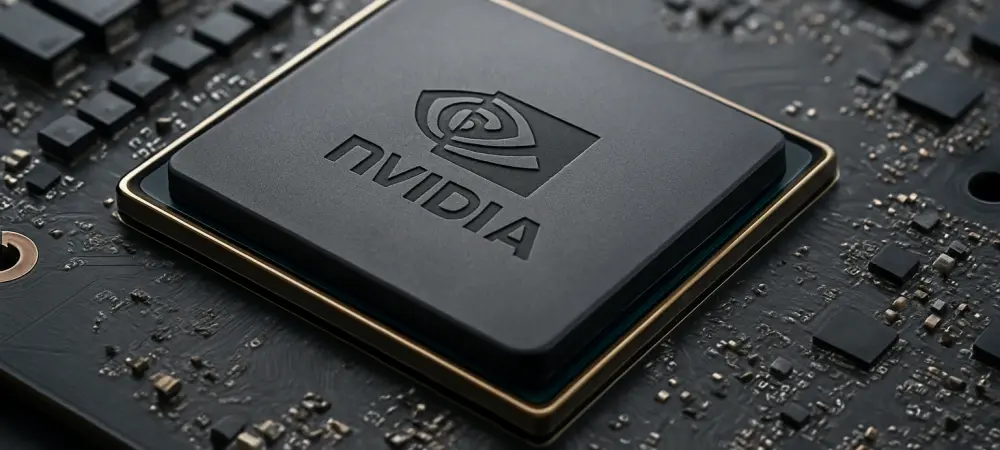Setting the Stage for AI Market Supremacy
In an era where artificial intelligence shapes industries from healthcare to autonomous driving, the race for efficient AI inference hardware has become a defining battleground for tech giants. Imagine a world where real-time data processing powers life-saving medical diagnostics or self-driving cars with split-second decision-making—such capabilities hinge on the performance of AI accelerators. NVIDIA, with its Blackwell GPU architecture, has emerged as a frontrunner in this high-stakes market, setting benchmarks that competitors struggle to match. This analysis dives into the dynamics of the AI inference sector, exploring how NVIDIA’s technological prowess translates into market dominance through superior performance, profitability, and strategic positioning. The purpose is to dissect current trends and forecast future trajectories, offering stakeholders a clear view of where opportunities and challenges lie in this rapidly evolving landscape.
Decoding Market Trends and Competitive Dynamics
NVIDIA’s Performance Edge and Profitability Powerhouse
The AI inference market, projected to constitute 85% of future AI demand, is witnessing NVIDIA’s Blackwell GPU, particularly the GB200 NVL72 platform, redefine performance standards. In a 100MW AI factory setup, this architecture boasts an impressive profit margin of 77.6%, translating to an estimated profit of $3.5 billion USD. This figure starkly contrasts with competitors such as Google’s TPU v6e pod at 74.9% and AWS’s Trn2 Ultraserver at 62.5%, while AMD trails with negative margins of -28.2% for its MI355X and -64.0% for the MI300X. NVIDIA’s revenue per chip per hour further solidifies its lead, generating $7.5 compared to AMD’s meager $1.7 for the MI355X. These metrics underscore a critical market trend: profitability in AI inference is not solely about hardware but also about optimized integration, an area where NVIDIA excels.
Cost Structures and Investment Returns in Focus
Analyzing the total cost of ownership (TCO) reveals another layer of the competitive landscape. NVIDIA’s GB200 platform carries a substantial TCO of approximately $800 million USD, nearly on par with AMD’s older MI300X at $744 million USD. However, the justification for NVIDIA’s cost lies in its unmatched inference efficiency, making it a preferred choice for AI factories prioritizing long-term returns over initial savings. AMD’s newer MI355X cuts TCO to $588 million USD, matching offerings from Huawei, yet it struggles to deliver comparable performance or profitability. This disparity highlights a market reality: while reducing upfront costs is appealing, the true differentiator remains the return on investment through operational efficiency, a domain where NVIDIA currently holds a significant advantage.
Data Reliability and Market Perception Challenges
A notable wrinkle in this analysis stems from concerns over data accuracy, as some initial industry reports faced scrutiny for methodological flaws, potentially inflating NVIDIA’s lead while underrepresenting competitors like AMD. This uncertainty suggests that while NVIDIA’s dominance in AI inference is apparent, the precise extent of its advantage might be narrower than first reported. Market perceptions are further complicated by the variability of real-world benchmarks, which depend on workload types and optimization levels. A key trend emerging from this is the growing demand for standardized testing methodologies to ensure fair comparisons, as hardware specs alone do not dictate outcomes—software ecosystems play an equally pivotal role, giving NVIDIA an edge through its CUDA platform.
Projecting the Future of AI Inference Hardware
NVIDIA’s Strategic Roadmap and Innovation Pipeline
Looking toward the horizon, NVIDIA is poised to maintain its market lead with a robust pipeline of innovations. The upcoming Blackwell Ultra GPU, expected to deliver a 50% performance uplift over the current GB200, sets the stage for continued dominance. Following this, the Rubin platform slated for 2026, along with subsequent iterations like Rubin Ultra and Feynman, reflects a commitment to relentless advancement. This rapid release cadence aligns with industry expectations that staying competitive demands constant evolution in both hardware and software. NVIDIA’s mature ecosystem, combining cutting-edge chips with optimized software, positions it to capture a significant share of the expanding AI inference market in the coming years.
Competitive Responses and Market Shifts
Competitors are not standing still, as AMD gears up to challenge NVIDIA with the MI400 platform, anticipated to roll out soon, focusing heavily on software enhancements to boost inference capabilities. This move signals a broader market shift toward closing the software optimization gap that currently favors NVIDIA. Economic factors, such as fluctuating chip manufacturing costs, and potential regulatory oversight concerning market concentration could influence these developments. While NVIDIA’s established position offers a near-term advantage, sustained competition from AMD and others could reshape market dynamics if software improvements and cost efficiencies are realized at scale.
Emerging Opportunities and Risks in the Sector
The AI inference market presents both opportunities and risks as it evolves. For stakeholders, the opportunity lies in leveraging platforms that offer the best balance of performance and profitability, an area where NVIDIA currently excels. However, risks include over-reliance on a single vendor, which could expose businesses to supply chain disruptions or pricing volatility. Additionally, the lack of uniform benchmarking standards poses a risk of misinformed investment decisions. As the market matures, the push for interoperability and open standards may emerge as a critical trend, potentially leveling the playing field for smaller players or new entrants with innovative solutions.
Reflecting on Market Insights and Strategic Pathways
Looking back, the analysis reveals that NVIDIA’s Blackwell GPU architecture, especially the GB200 NVL72, outpaces competitors in AI inference with a commanding profit margin of 77.6% and revenue per chip of $7.5 per hour, despite a high TCO of $800 million USD. Competitors like AMD grapple with negative margins and performance gaps, largely due to deficiencies in software optimization. The uncertainty introduced by flawed industry data underscores the need for reliable benchmarks to guide market decisions. For stakeholders, the path forward involves prioritizing platforms with proven inference efficiency, monitoring competitive advancements like AMD’s MI400, and advocating for standardized testing to ensure transparency. As the AI inference market continues to grow, diversifying vendor relationships and investing in adaptable software ecosystems emerge as vital strategies to mitigate risks and seize emerging opportunities.

